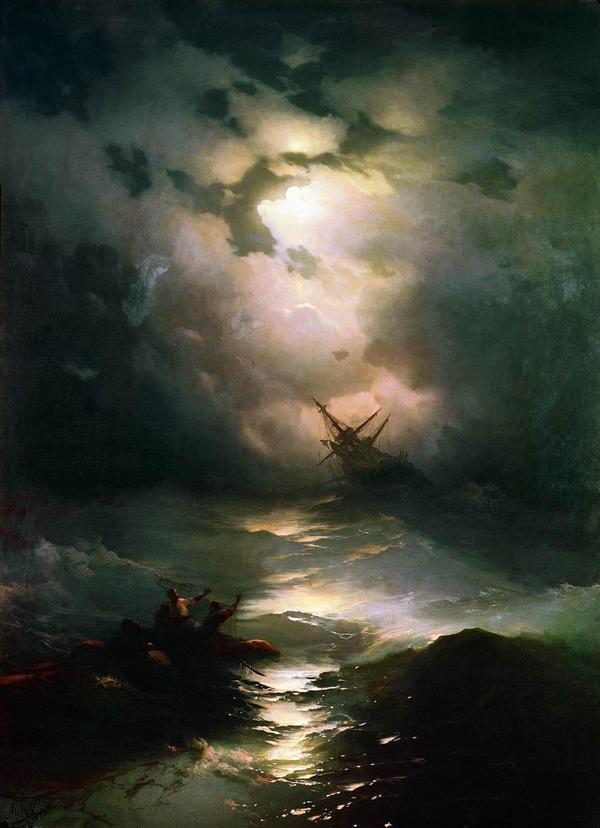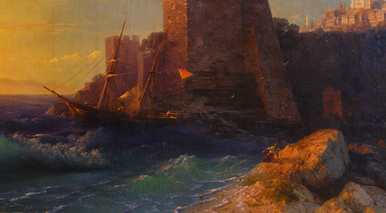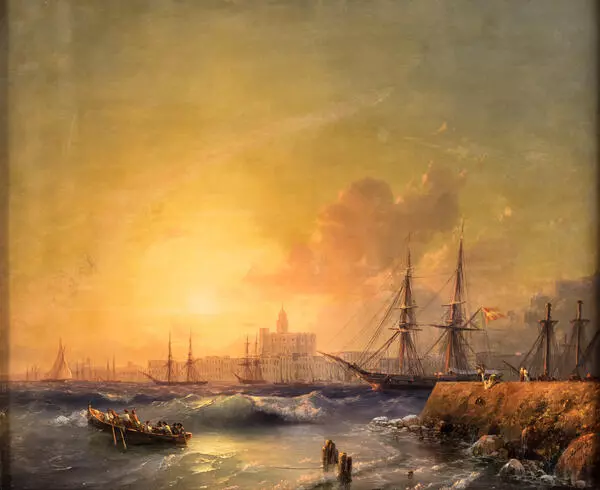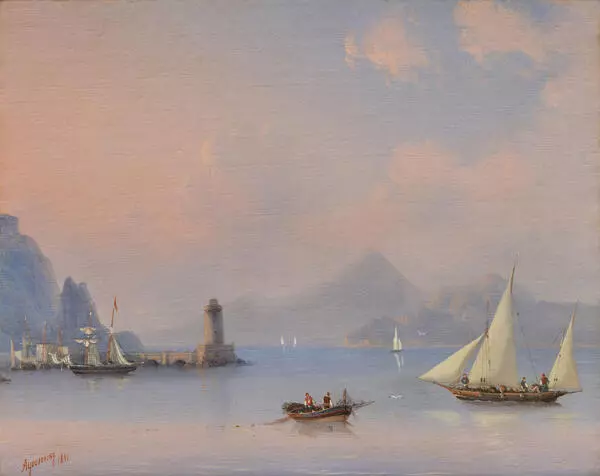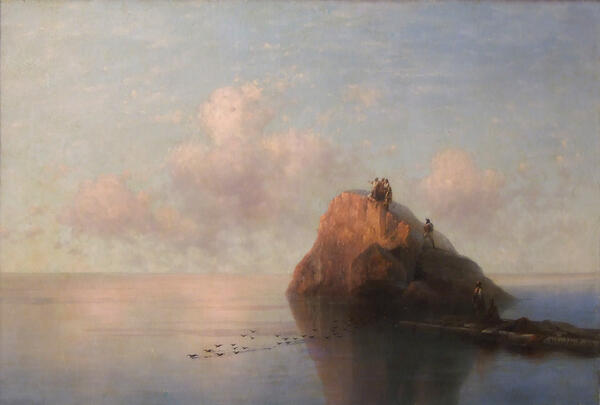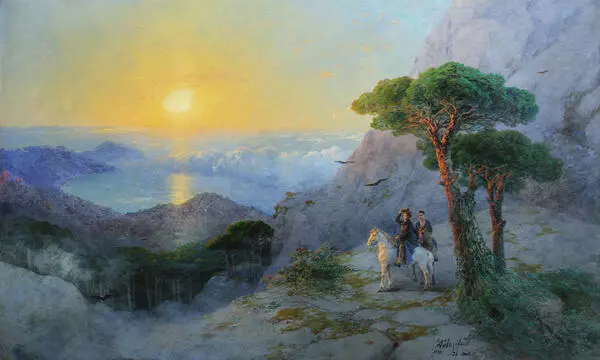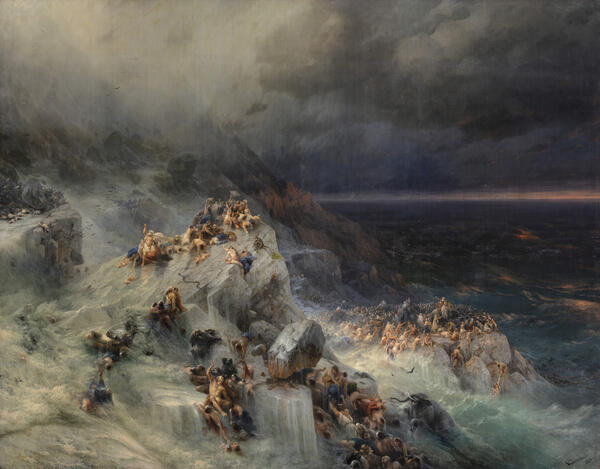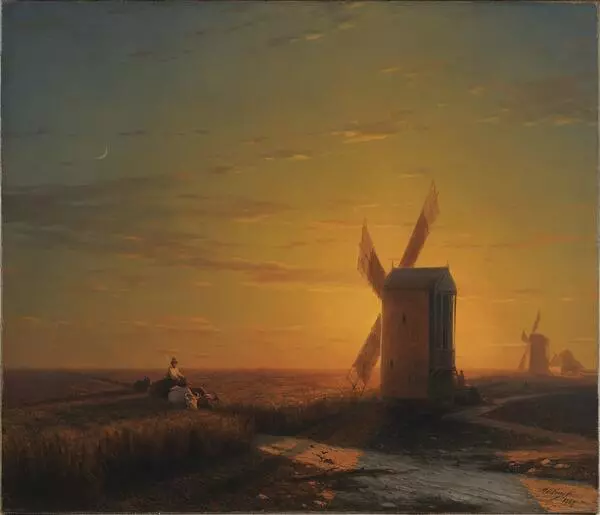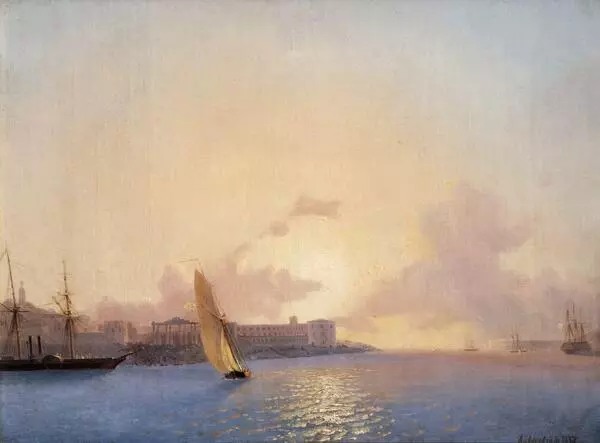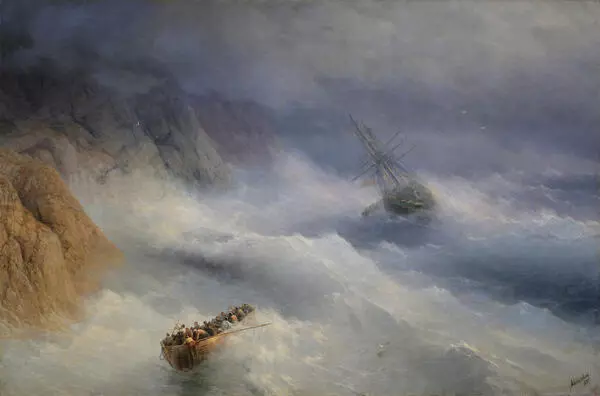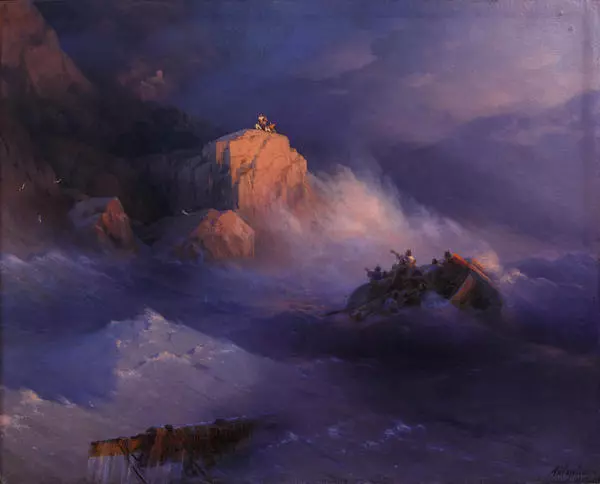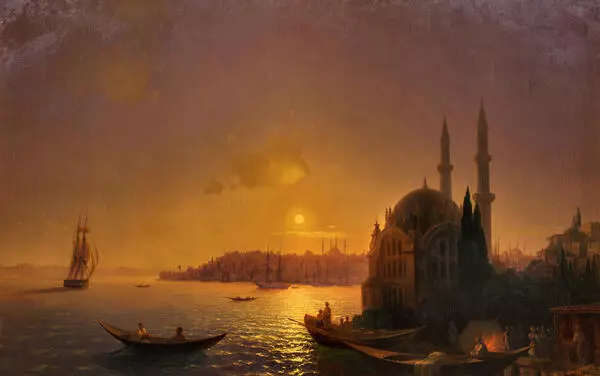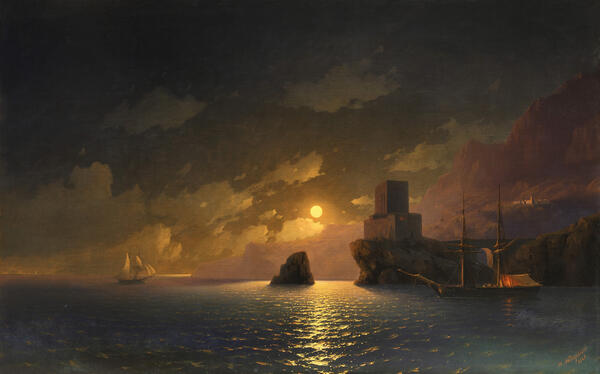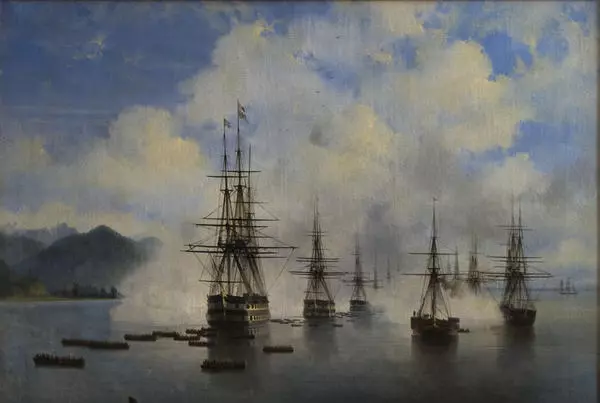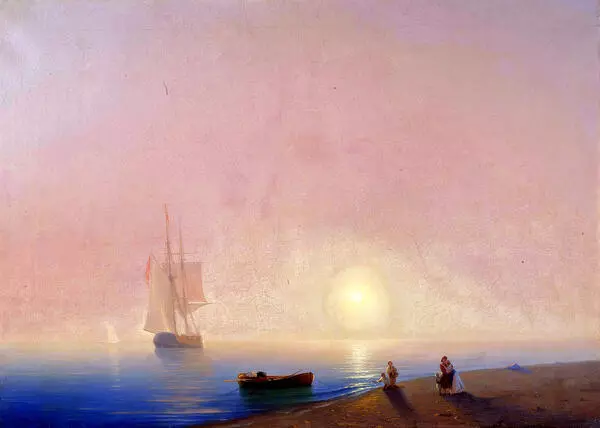Storms and shipwrecks were a favourite theme of Aivazovsky. He used to say that out of six thousand paintings he created four thousand were dedicated to sea storms. Storm in the North Sea — one of the key pieces of Ivan Aivazovsky featuring the struggle of human beings with the elements. It demonstrates the proficiency of the artist in full. The painting is striking due to the highest technical merit and emotional depth. Aivazovsky often depicted the wind-blown clouds, disturbing moonlight and splendid waves overturning the ships. The artist painted one of his first pieces of this kind — the Shipwreck — in 1837, and since then he was developing this theme for his entire life.
Aivazovsky created the painting Storm in the North Sea in a few days, and we can observe this easiness of brushwork in every smallest detail. Improvisation was one of his favourite styles. He claimed: ‘Movements of the living elements are too subtle to be captured by the artist’s brush: it is unthinkable to paint a lightning, a wind blast or a wave splash from life…’Aivazovsky created his best paintings using his imagination.
This painting is also striking because of its size — its surface makes about 6 square metres. The artist depicted a shipwreck in the open sea with the sky lit by phosphoric moonlight in the background. In a masterly fashion, he painted the ragged clouds and the hurricane wind causing the ship in the background to take a list. The full moon is peeping out from the black clouds — it illuminates the wild waves, the wrecked ship and the desperate survivors on the stump. The catastrophe in front of our eyes is so scary, that the artist preferred to put a veil of night darkness over it.
The moon is the only witness of the shipwreck. Aivazovsky often used this compositional practice in his paintings to set the focus and to help the viewers concentrate on the heroic deed of human beings. The struggle of the survivors with the elements was important for the artist to depict. The painting is very dynamic, and the agile, energetic brush of the artist adds more tension to it. The painting is the expression of the master’s heart, one of the most prominent and most dramatic pieces by Aivazovsky.
Aivazovsky created the painting Storm in the North Sea in a few days, and we can observe this easiness of brushwork in every smallest detail. Improvisation was one of his favourite styles. He claimed: ‘Movements of the living elements are too subtle to be captured by the artist’s brush: it is unthinkable to paint a lightning, a wind blast or a wave splash from life…’Aivazovsky created his best paintings using his imagination.
This painting is also striking because of its size — its surface makes about 6 square metres. The artist depicted a shipwreck in the open sea with the sky lit by phosphoric moonlight in the background. In a masterly fashion, he painted the ragged clouds and the hurricane wind causing the ship in the background to take a list. The full moon is peeping out from the black clouds — it illuminates the wild waves, the wrecked ship and the desperate survivors on the stump. The catastrophe in front of our eyes is so scary, that the artist preferred to put a veil of night darkness over it.
The moon is the only witness of the shipwreck. Aivazovsky often used this compositional practice in his paintings to set the focus and to help the viewers concentrate on the heroic deed of human beings. The struggle of the survivors with the elements was important for the artist to depict. The painting is very dynamic, and the agile, energetic brush of the artist adds more tension to it. The painting is the expression of the master’s heart, one of the most prominent and most dramatic pieces by Aivazovsky.

